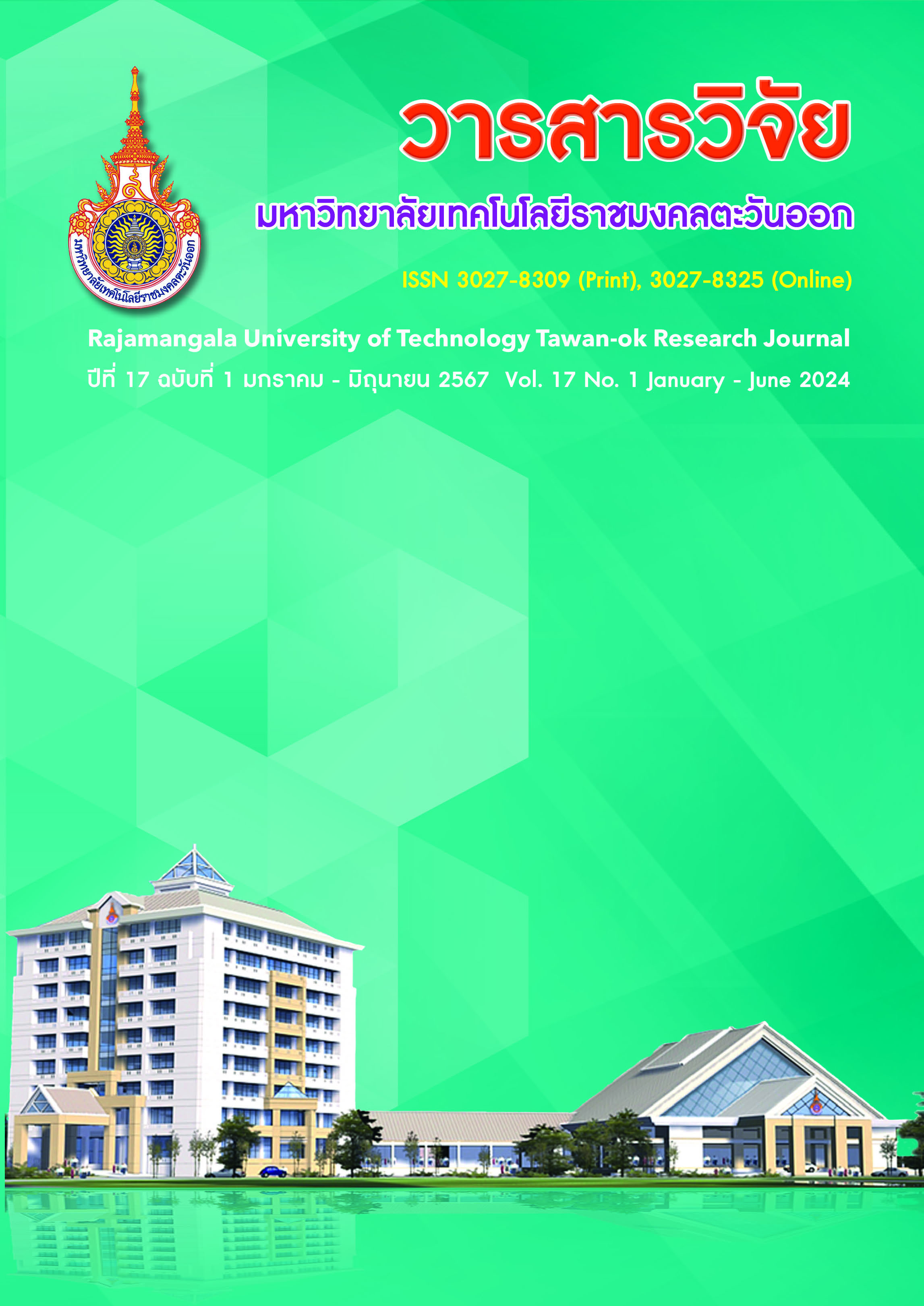Optimizing the environment for the tropical climate
Main Article Content
Abstract
This research is an experimental research aims to find landscape design variables that affect the weather around the building. At the Micro-climate level that will make the weather cooler to get closer to thermal comfort zone. This research area studies are in front of the landscape technology building at Rajamangala University of Technology Tawan-Ok Bang Phra Campus Chonburi Province which is the location of the research area for Sustainable Solar Cabin Prototype Study Project. The research Study areas with the same climate and topography are 4 locations as following: 1. The area above the concrete yard 2. The area above the lawn. 3. The area with trees in a sparse forest style with a pond and 4. The area with trees in a dense forest style with a pond. The temperature and humidity were checked by installing the research tool are the UNI-T A12T temperature Humidity Meters, were installed at all 4 points above the area of use at a level of 1.40 meter above ground, 24 hours a day for 4 days. The research result found that the significant variables are 1. Materials. Concrete and grass surface Accumulates heat differently. 2. Shade: Areas in landscaping areas such as sparse forests and dense forests. The surface is under the shade of trees. Sunlight is blocked from the leaves. This causes the surface to not receive direct sunlight and 3. Increasing cooling from water evaporation (Evaporative cooling). The research conclusion is the coldest environment is the environment that is obscured by trees and sunlight falls on the surface. In this research, water evaporation was added to the study area. It was found that the influence of water evaporation was in the sparse forest landscaping area with not too dense foliage and near a pond. It was found that the temperature was cooler. The area is landscaped design with dense forest and dense foliage. and also found that The air temperature in the experimental building is 4 degrees lower than in the hottest part of the day. Due to the cooling influence that occurs, the temperature difference between outside and inside the experimental building is approximately 4 degrees. Such influence will cause the heat transfer to be 32.8% less than before, which may be concluded that the environment is manipulated. By increasing the evaporation of water Can make the temperature in this area drop closer to the comfort zone.
Article Details

This work is licensed under a Creative Commons Attribution-NonCommercial-NoDerivatives 4.0 International License.
References
ASHRAE. (1992). ANSI/ASHRAE standard 55-2013, thermal environmental conditions for human occupancy. Atlanta: Author.
ASHRAE. (2004). ANSI/ASHRAE standard 140-2014, standard method of test for the evaluation of building energy analysis computer programs. Atlanta: Author.
Boonyatikarn, S. (2004). Bio-Solar home: It is power by the Sun. Bangkok: Chulalongkorn University Press, 50-61.
Boonyatikarn, S. (1999). Energy efficient home design technique for better quality of life. Bangkok: Property market Co., ltd, 46-47., 58-62., 95-100.
Boonyatikarn, S. (2002). Integrated Design Approve: Shinawatra University. Bangkok: G M Max Media, 39-55.
Kongsuk, P., Khaosoi, W., Sothong, S., & Losuwan, S. (2022). Techniques for designing energy-saving systems for buildings. Case study of the Business Innovation Center Building, Rajamangala University of Technology Tawanok, Chanthaburi Campus. 14th Electrical Engineering Network Conference: 293-299.
Meteorological Department. (2023). Climate of Chonburi Province. Climate Center Meteorological Development Division. Meteorological Department. http://climate.tmd.go.th/data/province/Chonburi. [Accessed June 17, 2023].
Mirrahimi, S., Mohamed, M. F., & Haw, L. C. (2016). The effect of building envelope on the thermal comfort and energy saving for high-rise buildings in hot–humid climate. 1508-1519. https://doi.org/https://www.sciencedirect.com/science/article/abs/pii/S1364032115010254?via%3Dihub
National Institute of Metrology. (2022). Understanding and interpreting temperature measurement and calibration certificates. Bureau of Standards. Bureau of Freight Forwarding Department of Land Transport.


